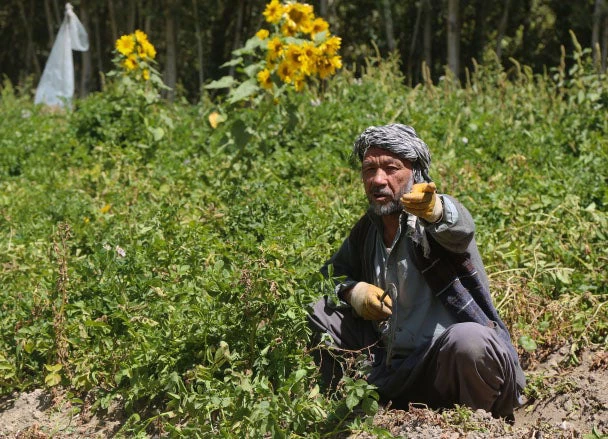
Today I joined leaders and representatives from 70 countries and 20 international organizations and agencies at the Brussels Conference on Afghanistan. Together with its development partners, the World Bank Group pledged its continued support to the Afghan people and outlined a course of action to help all Afghans realize their dream of living in peace and prosperity.
Afghanistan has come a long way since 2001 and has made much progress under extremely challenging circumstances: life expectancy has increased from 44 to 60 years, maternal mortality has decreased by more than three quarters and, from almost none in 2001, the country now counts 18 million mobile phone subscribers.
Yet, enormous challenges remain as nearly 40 percent of Afghans live in poverty and almost 70 percent of the population is illiterate. This is made worse by growing insecurity and the return of 5.8 million refugees and 1.2 million internally displaced people. Much also remains to create jobs for the nearly 400,000 people entering the labor market each year.
To that end, here are five priorities we need to address to ensure a more prosperous and more secure future for all Afghans:
- Aid is critical for Afghanistan’s future. Afghanistan’s future depends heavily on aid over coming years. Increased aid and an increasing share of aid delivered through the government’s budget are crucial.This aid is necessary to finance the public investments that will move Afghanistan onto a higher long-term economic growth trajectory, while improving living standards, reducing poverty, and generating revenues that could substitute for aid over time. Without such investment, growth prospects are limited and conflict risks will remain elevated.
- Afghanistan’s future is agriculture, human capital investment, and labor mobility. . 61 percent of Afghans earn their wages from agriculture, and improving agriculture productivity is the most direct way to improve incomes and employment opportunities. Investing in education and health is also vital to any growth strategy – inclusive growth is impossible when the majority of the population is illiterate and 3 million children are out of school. Further, helping Afghan workers find jobs with competitive salaries abroad through formal migration agreements with other countries offer opportunities to reduce labor market pressures. This would increase remittances and address some of the frustrations among youth that can trigger conflict.
- Afghanistan’s mining and hydrocarbon potential must be realized. Agriculture can bring growth and employment, but only extractive industries can provide sufficient government revenues and exports to offset expected declines in aid. Governance risks surrounding extractive industries are real, but must be – and can be – successfully managed with the support of the international community.
- Regional integration with neighboring countries should be encouraged. Developing closer trade ties with countries in the region will boost energy transit trade and expand export opportunities in agriculture and extractives. In addition, regional energy transit trade and IT connectivity have the potential to generate additional revenue. Given that resources for infrastructure investments are scarce, key productive sectors, including agriculture for domestic production and export, and – later – mining should be given priority.
- Finally, fragility is likely to persist in Afghanistan. Institutional weakness and violent conflict are not quickly resolved and the challenge is to enable private sector investment and economic growth despite these realities.
Possible options are to invest in social transfers to shield households from the long-term impacts of natural disasters and sectarian violence. A transfer program costing around $210 million a year could cover 5 percent of the population and halve food poverty. Afghanistan’s path to prosperity is likely to be long and now is the time to press forward with our support for the country.
To that end, the World Bank proposes to increase its overall financial support for Afghanistan and provide risk-sharing instruments and guarantees to encourage international and domestic private investment in the context of the country’s fragility.
In these challenging times, we will stay the course in supporting the people of Afghanistan build their future toward self-reliance, prosperity, and peace.


Join the Conversation